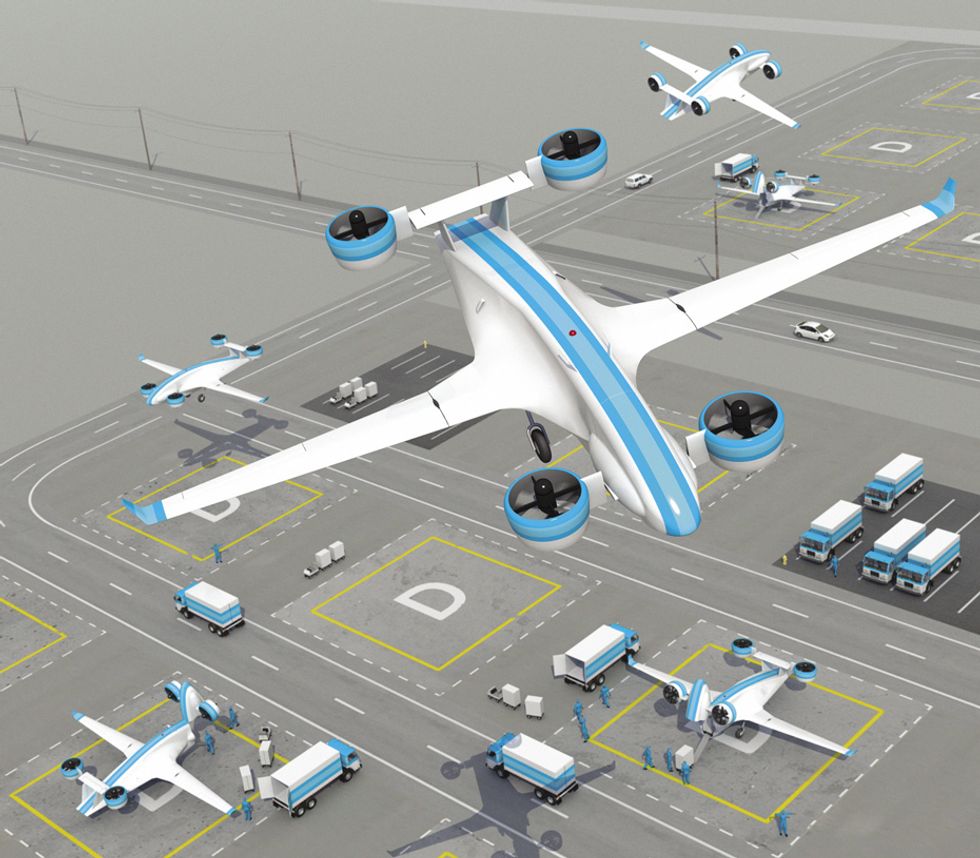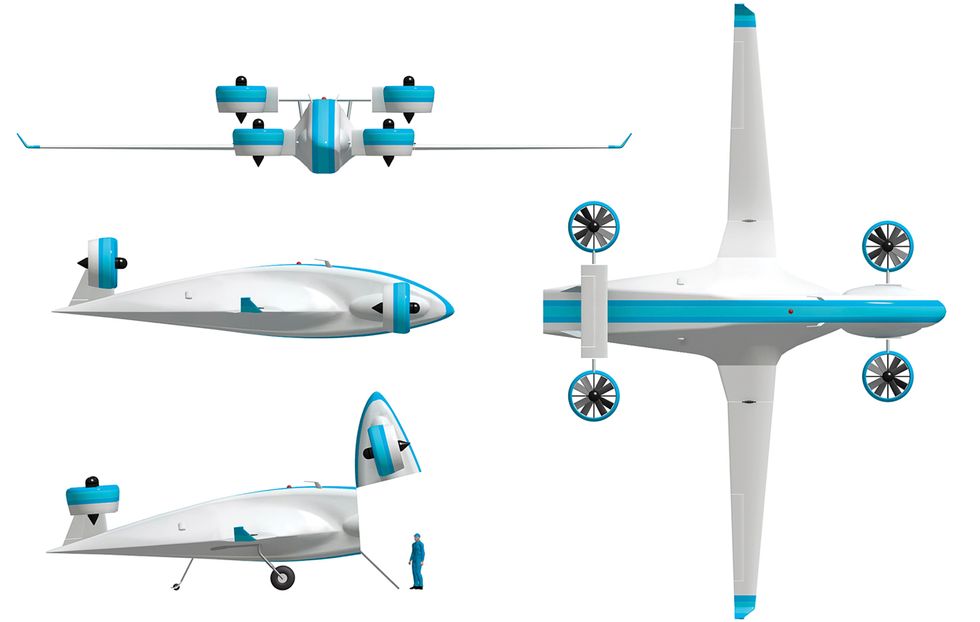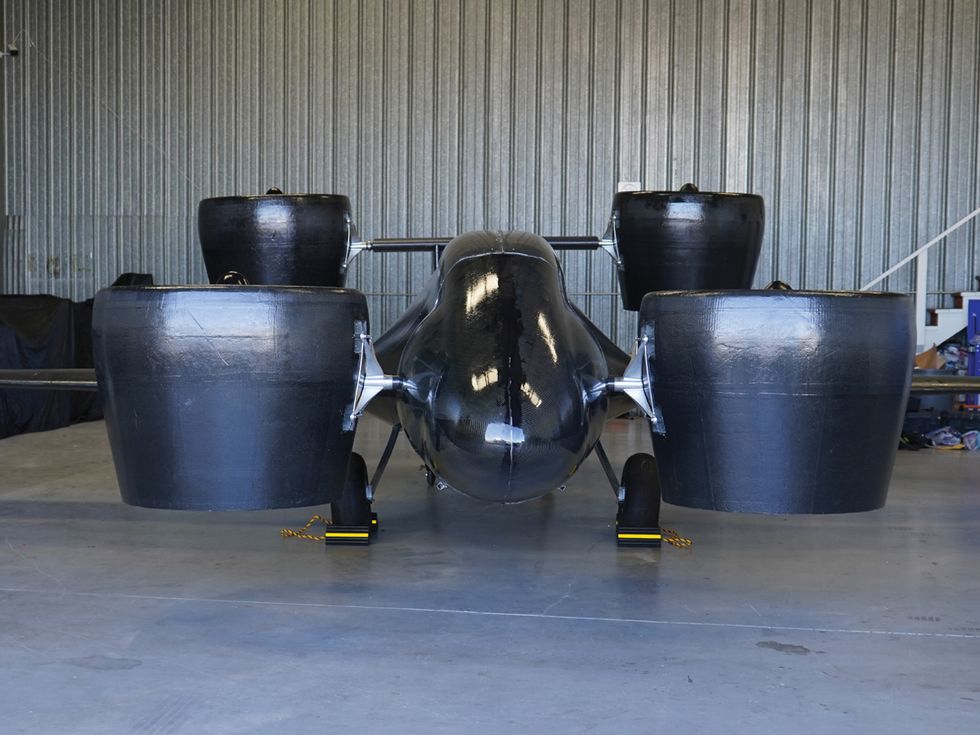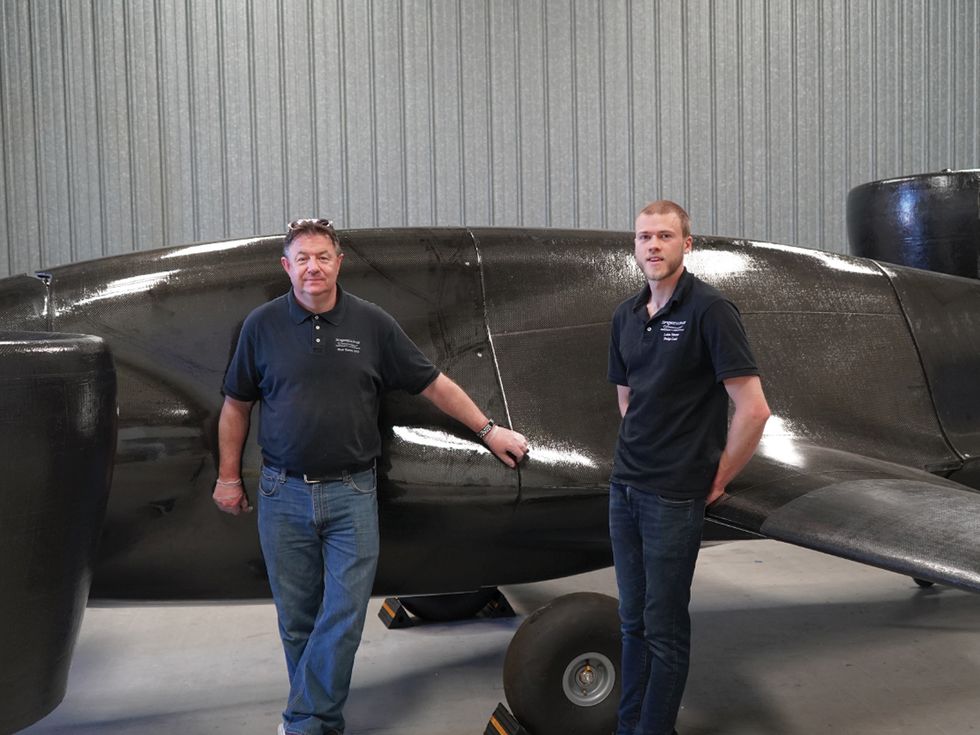Can Cargo-Carrying Drones Jump Over Air Freight’s Logistical Logjams?
Drone startup Sabrewing says its big vertical-takeoff flier would be quick to land, load, and take off again
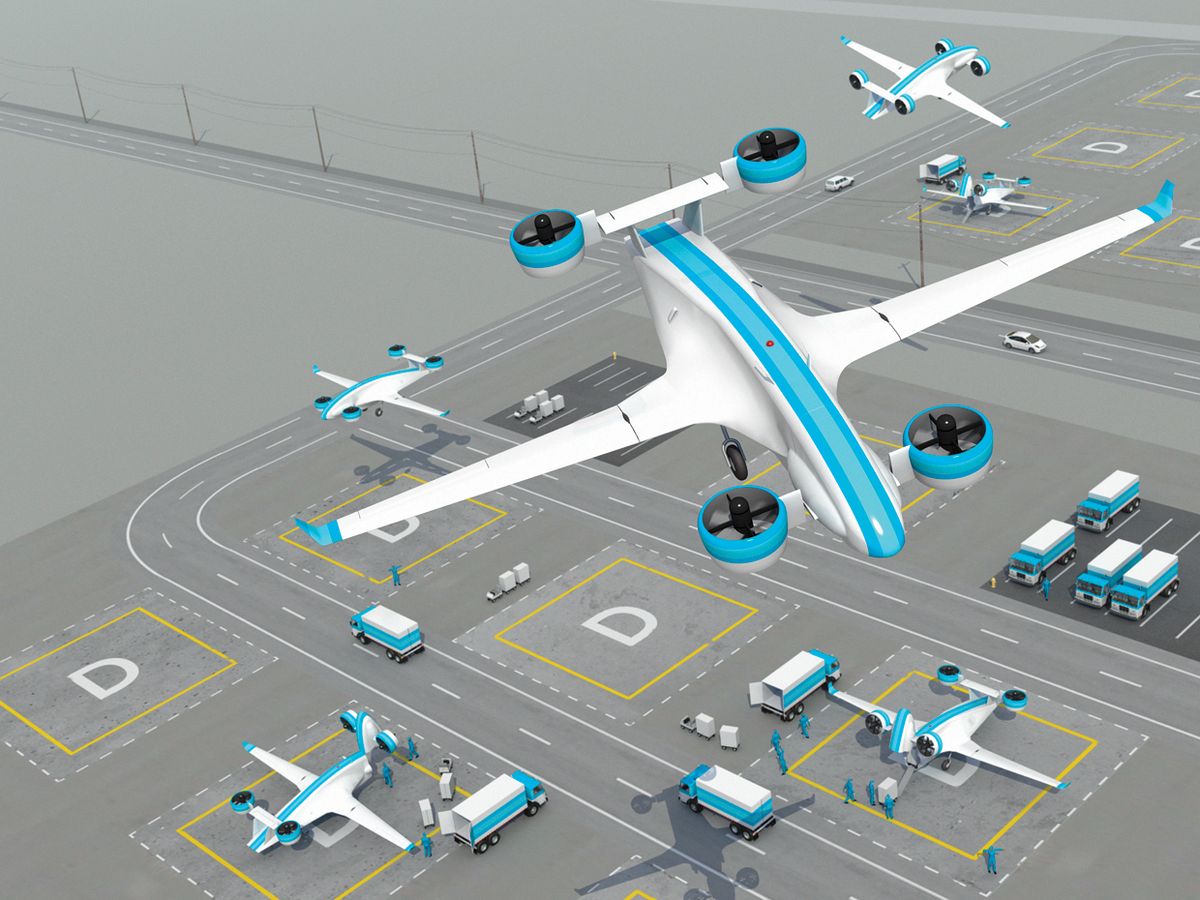
It’s 4 a.m. on 23 December, and an MD-11 freighter has just landed at the logistics base near San Bernardino, Calif. It landed late because of heavy fog; many of the aircraft in San Bernardino won’t be able to depart because the other airports in the Los Angeles Basin are fogbound as well.
Ground crews remove cargo from the MD-11 and get the many packages into delivery trucks and small planes as quickly as possible before the start of the morning rush of cargo from Amazon, Walmart, and other online retailers scrambling to deliver Christmas gifts. Meanwhile, construction is snarling traffic on the I-10 freeway into Los Angeles, and because of the fog, the I-15 is no better. Similar messes are often seen at choke points throughout the world, where the package-delivery business faces a raft of problems.
Now imagine that the MD-11 landing in San Bernardino meets up with a number of small aircraft, each fully fueled for a day of flying, with no pilots on board and no weather restrictions. The ground crew slides four fully loaded LD-2 containers with 2,400 kilograms of cargo through the nose of each craft, closes them up, and poof, they’re cleared for takeoff, despite the thickening fog. The aircraft all take off, arriving 30 minutes later at various nearby airports, like the one in Oxnard, Calif., where they taxi to the ramps of the relevant package-delivery companies. There the ground crew removes the cargo, sorts it, and loads the small aircraft with new cargo, bound for the Beverly Hills package-sorting facility.
After being cleared for takeoff, the first of these aircraft rises like a helicopter before heading to the Beverly Hills site, which is just a parking lot with two ground handlers. As this odd-looking uncrewed aircraft comes in, the wings fold to help the plane clear any branches or power lines. Just then, a truck pulls right into the intended landing spot, but the aircraft perceives the obstruction and rises to a holding position until the ground crew can clear the area. Only then does it land, give up its cargo, accept new cargo, and get cleared again for takeoff.
And so it goes, right down the supply chain. Weather conditions that today would paralyze operations are shrugged off—fog, freezing rain, even failures of ground vehicles at improvised landing areas. Say a forklift can’t cross a muddy field to unload the cargo container. No problem; one of the ground crew simply tilts the aircraft’s nose up and unlatches the hooks and the cargo container slides right out with the help of a cargo winch. Throughout the day, the process of sorting, loading, and takeoff is repeated 15 more times at Oxnard and other airports in Southern California before a final 4,500 kg of payload is loaded into the aircraft and it returns to San Bernardino. Refueling takes place just once, at the end of the day.
This vision of urban air mobility, built on the promise of electric propulsion and on autonomous flight, is no sci-fi dream but a practical project, one that a number of companies are pursuing. Airbus has finished testing its Vahana, a concept electric vertical takeoff and landing (VTOL) aircraft that is meant to fly passengers at low altitudes within and between cities and towns. There is also the Cora, a creation of Google impresarios; it, too, is meant only for short distances and low altitudes. Neither of those two aircraft can carry much cargo, though, particularly in bad weather.
Consider how much easier it would be to use such methods to move cargo instead of people. If there are no passengers on board, you can lose the heavy, bulky gear that assures passenger safety. Replace pilots and you can also dispense with the instruments that help them see where they’re going, as well as the equipment that soundproofs the cabin and supports the windows, floor beams, bulkheads, and so forth. In some cases, an aircraft can weigh 25 percent more with human-factor equipment than without it.
No Runway? No Problem: Go Straight Up
1. Data fed from all the sensors [blue dots] are fused into a single picture of the plane’s surroundings by a sensor-interface computer, which monitors nearby air traffic and computes pathways a safe distance away.





My company, Sabrewing Aircraft, in Camarillo, Calif., was founded to exploit these advantages. By starting with a clean-sheet concept that was never meant to fly people, only cargo, and thus with no one on board to be put at risk, the aircraft can go to and from places no crewed rival can safely reach.
We call it the Rhaegal. If need be, it can lift almost 2,500 kg (5,500 pounds) of cargo straight up from the ground, like a helicopter; if a short runway is available, it can take off in the standard way, then fly straight ahead carrying as much as 4,500 kg (10,000 pounds). That’s more than the new Cessna 408 SkyCourier can manage, and the Rhaegal flies much faster and higher. Also, it is designed to load and unload without the help of forklifts, pallet jacks, or other specialized equipment.
The Rhaegal sits low to the ground, whether on tarmac or even a sand dune, then tilts its nose upward so that either containerized or bulk cargo can be quickly loaded and secured. The aircraft’s high-flotation “tundra tires” and four-post landing-gear arrangement allow it to land in mud, snow, sand, marsh, or deep puddles, and an integral loading ramp with rollers can be used to ease loading of pallets or containers.
Because the Rhaegal has a maximum gross weight above 600 kg (1,320 pounds) it falls under U.S. Federal Aviation Administration Regulation Part 23, which requires that it be remotely monitored and controlled and that it remain in contact with air traffic control at all times. Its operator, who can be hundreds or even thousands of miles away, controls the aircraft via a satellite link. In this way, the local air traffic control authority speaks to the operator through the aircraft, just as if the operator were sitting in the cockpit itself.
Prior to takeoff, the operator loads into the computer an exact flight plan, provided by the air traffic control authorities, that includes procedures for departing in any weather and also establishes the frequencies, routes, and a clearance to the aircraft’s final destination. That way it can find its way home even if it loses communication with the operator or air traffic control.
Rhaegal, by
the Numbers
Wingspan: 18 meters
Length: 18 meters
Height: 3.7 meters
Cruise speed: 180 knots
Range: 1,000 nautical miles (1,850 kilometers)
Ceiling: 6,700 meters
Vertical takeoff payload: 2,450 kilograms
Conventional takeoff payload: 4,540 kg
The U.S. Federal Aviation Administration (FAA) requires that a human pilot of a conventional aircraft must see and avoid any air traffic that may be following an intersecting flight path. The same rule applies to the Rhaegal: It must do this job by itself, without operator input. This system, known as the Detect and Avoid (DAA) system, uses a mix of sensors, among them an anticollision radar (made by Garmin), a camera-based system that can spot conflicting air traffic and provide autopilot commands to avoid it (made by Iris Automation), and a lidar, or laser-ranging system, to detect power lines and other small obstructions at close range (made by Attollo Engineering). The DAA system also uses what is called automatic dependent surveillance–broadcast (ADS-B), a satellite-navigation system now mandated by the FAA for virtually all aircraft of any size operating in controlled airspace. This system tracks all flights no matter what paths they take, allowing for far more flexible routing than the older, ground-based radars could manage.
Not all traffic problems are in the air; some are on the ground. Cars or trucks may be moving around or even parked, for instance, when a parking lot itself serves as the landing zone. The Rhaegal uses an artificial-intelligence landing system to spot obstacles from above, including vehicles, people, rocks, and uneven surfaces. This landing system can recognize many types of obstacles and clearings, including landing pads aboard ships at sea.
Data fed from all the sensors are fused into a single picture of the plane’s surroundings by a sensor-interface computer, which monitors nearby air traffic and computes how to keep a safe distance away. When that happens, the computer sends a message to the operator on the ground that a possible conflict is approaching; the operator then makes the decision to change the flight path. If the operator does nothing, the computer will take the necessary steps on its own. Wherever the aircraft goes, the computer can detect bad weather up ahead and provide the data to the operator, who together with air traffic controllers can make changes to avoid storms, in some cases by flying well above them.
What’s more, the Rhaegal is semiautonomous, meaning that it can complete its mission even if it loses communication with the operator and with air traffic control in general. It simply follows a preplanned flight route, detecting and avoiding traffic on the way and then landing at a remote location.
The Rhaegal’s all-composite airframe is built in sections that can be quickly and easily repaired or even replaced in the field, with a minimum of hand tools. This modular design means that inspections that used to ground aircraft for weeks or even months can now be accomplished in hours. The Rhaegal is well suited for military applications: It can fly high and fast enough to avoid ground fire or fly low to avoid radar, enabling it to bring vital supplies to isolated units. It’s even versatile enough to whisk four casualties and two medics to a mobile hospital within the “golden hour” after an injury occurs, greatly increasing the patient’s chances of survival. In addition, the Rhaegal has a proprietary system that allows it to land safely if its propulsion system is damaged: It can either glide to a safe landing spot or, if the craft is hovering, it can land even if it loses the thrust of an entire duct unit.
Rhaegal gets its power from a turboshaft engine, which is basically a gas turbine designed specifically to turn a rotor rather than generate thrust, as a jet engine would do. This engine drives a generator that sends power to electric motors, which turn rotor blades. These are like propellers, but they are shrouded to provide more thrust than an open rotor would and to protect both people on the ground and the blades themselves when landing near bushes or trees. The point of this turboelectric drivetrain is to provide high efficiency in cruise flight and also high power during takeoff and landing. That heightened efficiency allows it to emit an estimated 70 percent less carbon than the Cessna 408 SkyCourier while carrying twice the load four times farther. And because of its turbo design, it can be made “greener” still by using biofuel.
Rhaegal’s rollout came in early May, and flight tests will begin at Edwards Air Force Base, in California. Oliver Garrow [left], Sabrewing’s chief technology officer, is standing next to Lukas Flenner, the design leader.
The airframe of the first Rhaegal was completed in March 2020, and we expect flight testing will have begun by the time this article appears. Sabrewing has been in discussions with the FAA since 2017, and permission to start type certification—which assures the safety of a new type of aircraft—could come shortly.
Certification is no small administrative matter: Type certification for even a small private airplane can easily cost US $50 million to $100 million, but a cargo UAV should cost just a fraction as much to certify. And the Rhaegal stands first in line for such certification, ahead of all other electric cargo carriers using vertical takeoff and landing.
So don’t be surprised if you look up sometime soon and see a Rhaegal cruising above your head. And some December in the not-too-distant future it might be playing Santa Claus to kids in both remote villages and large industrial centers throughout the world.
This article appears in the June 2020 print issue as “Can Cargo Drones Solve Air Freight’s Logjams.”
About the Author
Ed De Reyes, a retired Air Force test pilot, is CEO of Sabrewing Aircraft Co., in Camarillo, Calif.
